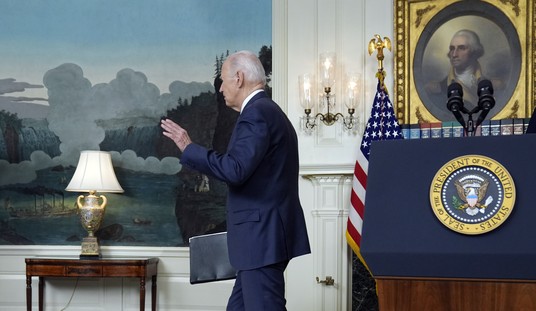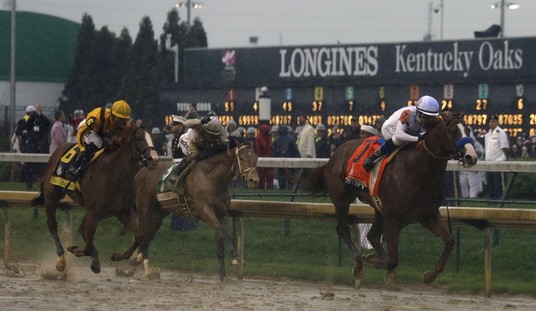
Several years ago, while Jake Tapper was still a nominally non-partisan reporter for ABC News, he was interviewed by Hugh Hewitt about a book he had just released called “The Outpost,” in which he chronicles the Oct. 3, 2009 battle for Combat Outpost Keating in the Nurestan Province of Afghanistan only 14 miles from the Pakistan border.
As he related in the interview, Tapper was moved to write the book after seeing news reports on the battle while in the hospital following the birth of his son. Although the style of “The Outpost” is similar to the book “War” by Sebastian Junger from 2010, unlike Junger’s book which was based largely on his experiences while being embedded multiple times with units at a camp called “COP Restrepo,” Tapper’s book “The Outpost” is based entirely on interviews he conducted after the battle for COP Keating, and his review of the Army’s after-action reports.
I read the book the first time not long after Hewitt’s interview of Tapper. Within the last couple years I learned that the book had been optioned for a movie, and I went back to read it again.
The Outpost movie was completed late last fall, but did not have a wide distribution deal in place for 2020, although it was scheduled for a couple Film Festivals in the spring and summer. But the COVID 19 pandemic altered all those plans. Yesterday the movie became available for rental on Amazon Video, and I was able to watch it last night.
I had followed various accounts of the making of the movie as provided by Tapper and the movie’s director Rod Lurie. Unfortunately, Lurie is a rabid Anti-Trumper so at some point I simply muted him on Twitter because most of his content was the typical Hollywood liberal screed that you would expect.
Once the release deal with Amazon was in place, a “Behind the Scenes” short video feature was posted on YouTube.
SPOILERS BELOW
I noted with a bit of curiosity at the start of the movie that there was a note “Based on a true story.” From having followed the making of the movie, I expected it would not be a “dramatized” version of real events — that didn’t seem necessary based on the real events. But once I watched the movie I understood why the “disclaimer” was included.
The history of COP Keating began when it was originally established in June 2006, more than three years prior to the battle in Oct. 2009 which is depicted in the movie. During that time there were several units that rotated through COP Keating, and Tapper’s book covers all those rotations, the units involved, as well as the commanders and some of the enlisted personnel for each based on his interviews.
Tapper reveals an interesting fact in his interview with Hewitt when he says that his first contract to write the book anticipated that it would only involve the battle on October 3, 2009, but in doing his research he came into contact with soldiers from units that had gone through COP Keating prior to the final unit that was involved in the battle. When you read the book you see that nearly two-thirds of the final product is about the stories of all those previous units — how the base was conceived and built, the purposes behind its horrible location, the efforts by each successive base commander to continue and extend the “outreach” to the local population made by the previous unit. But eventually those efforts collapse when the local population makes it apparent to anyone who cared to listen that they knew the Americans would eventually leave and the Taliban would still be there. In the end, being stationed to COP Keating was simply a matter of survival, not advancing the mission in Afghantistan.
The movie compresses this time frame by placing the unit that engaged in the fight for COP Keating under the command first of Lt. Benjamin Keating, later Captain Robert Yllescas, then “Captain Broward”, and finally Captain “Stoney” Portis who commanded the base at the time of the Oct. 3, 2009, battle although he was not physically present until the final hours. In reality, all those officers — with the exceptoin of “Broward” and Portis — commanded different military units stationed at COP Keating between June 2006 and Oct. 2009.
Both Lt. Keating and Cpt. Yllescas have extended portrayals in the book based on their personal stories, and their efforts at “outreach” to the local inhabitants of the Kamdesh Valley. But the limitations of time in what can be portrayed in the movie provide only a sampling of what they did and why.
The “Captain Broward” character is based on a real person who is covered in the book, but the name used in the movie is fictional. This particular commander — as is explained in the movie in a single scene — was seen both above him and below him in command as “damaged” after two tours in Iraq, and was not mentally prepared to lead the unit in the difficult circumstances they faced in Afghanistan. It is during the change-over in command of COP Keating that the battle takes place — “Captain Broward” has departed, and the highly regarded Captain Portis is on his way but had not yet arrived when the base was attacked.
The battle as depicted in the movie is considered accurate — but compressed — in the sense that they were able to build a relatively accurate replica of COP Keating to stage the battle sequences. The book describes numerous actions by various US soldiers during the course of the fight — movements from place “A” to place “B” under heavy fire — and Lurie wanted to capture those in realistic time sequence with dramatic effect by having a cameraman run alongside the actors as they recreated the same movement from “A” to “B” under fire as had happened during the fight. Another unfortunate fact of having to compress the action for a two hour movie is that many of these actions are not seen — but are described in great detail in the book.
The book tells the stories of numerous individual soldiers and their heroics during the battle. Not surprisingly the movie focuses on two — Sgt. Clint Romsesha and Spc. Ty Carter. Each received the Congressional Medal of Honor for their actions during the fight, which the movie notes at the end is the first time in 50 years that two living soldiers were award the CMH for actions in the same battle.
The third soldier who gets some attention at the end, but is probably overlooked some during the fight, was Lt. Andrew Bunderman, commander of Red Platoon, who led the fight to defend the base from the Tactical Operations Center (TOC). My recollection from the book is that not a single aspect of the base’s defensive perimeter survived the first minutes intact. The 120 mm mortar pit that was the most effective defense position for hitting attackers while they were still in the mountains surrounding the base, was taken out in the first few minutes of the fight. Bunderman had to work hard to address various problems around the camp which was dominated mostly by problems in the first two hours.
The US troops were vastly out numbered — some estimates were 500 to 6o. The attacking Taliban controlled the high ground all around the base, and were able to penetrate the exterior of the camp within the first hour. Most of the US forces had fall back to a tight inner perimeter to establish a defensible position, and then began deliberate efforts — led by Romesha — to take back various portions of the camp.
The fight started around 5:50 am, and nearly 12 hours later there were still attackers inside the perimeter of the base. Cpt. Portis arrived with a “Quick Reaction Force” at 7:00 pm, the remaining attackers were driven off, and the base’s perimeter was secured.
One thing I thought the movie could have done better was more clearly mark the passage of time as the battle unfolded. You don’t get a real sense watching the movie that an entire day passes — from dawn until after dark — during the 45 minutes or so of the movie that covers the fight. The only way you note the sense of time is when Cpt. Portis’ detachment is coming down the hill towards the camp it is approaching dusk, and when he gets inside the camp it is dark. But you never get the sense during the battle scenes as to how the situation deteriorated over the first several hours, almost to the point of the defense of the base collapsing.
Overall I thought the movie was a fair depiction of the book. It seemed obvious that it did not enjoy the financial backing of a major studio because I’m sure the producers and director would have opted to do more with the fighting sequences if they had a larger budget to work with. That is seen a bit too in the casting — other than Orlando Bloom who portrays Lt. Ben Keating in the first 30 minutes of the film, there are not “A” list actors in the movie.
But think it was well worth the $6.99 Amazon is getting for the rental, and its an important story told well.














Join the conversation as a VIP Member